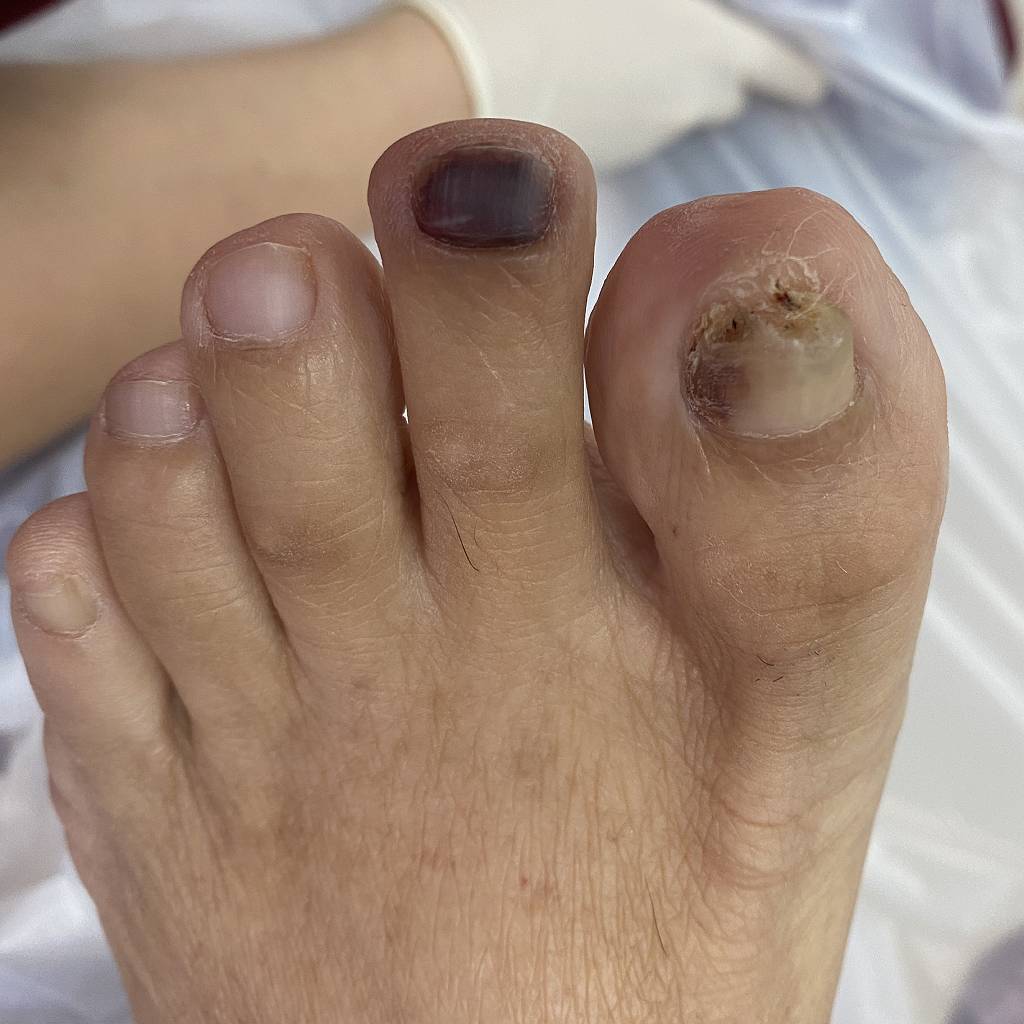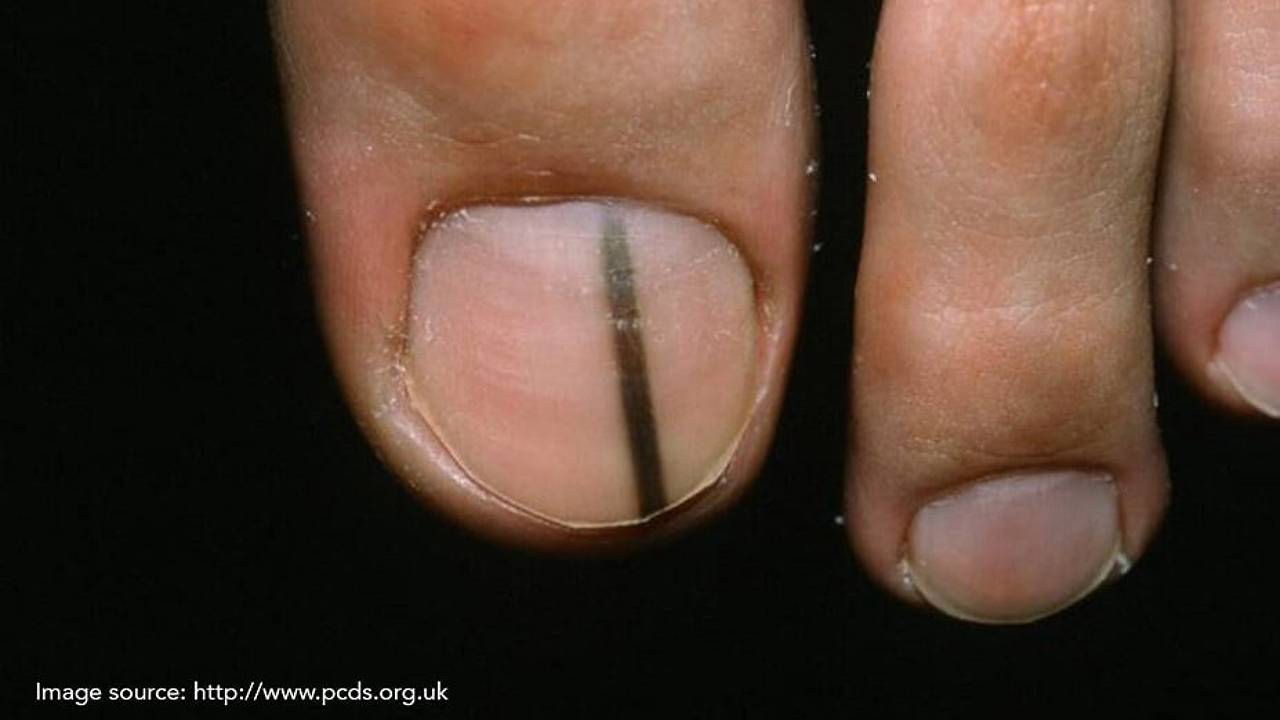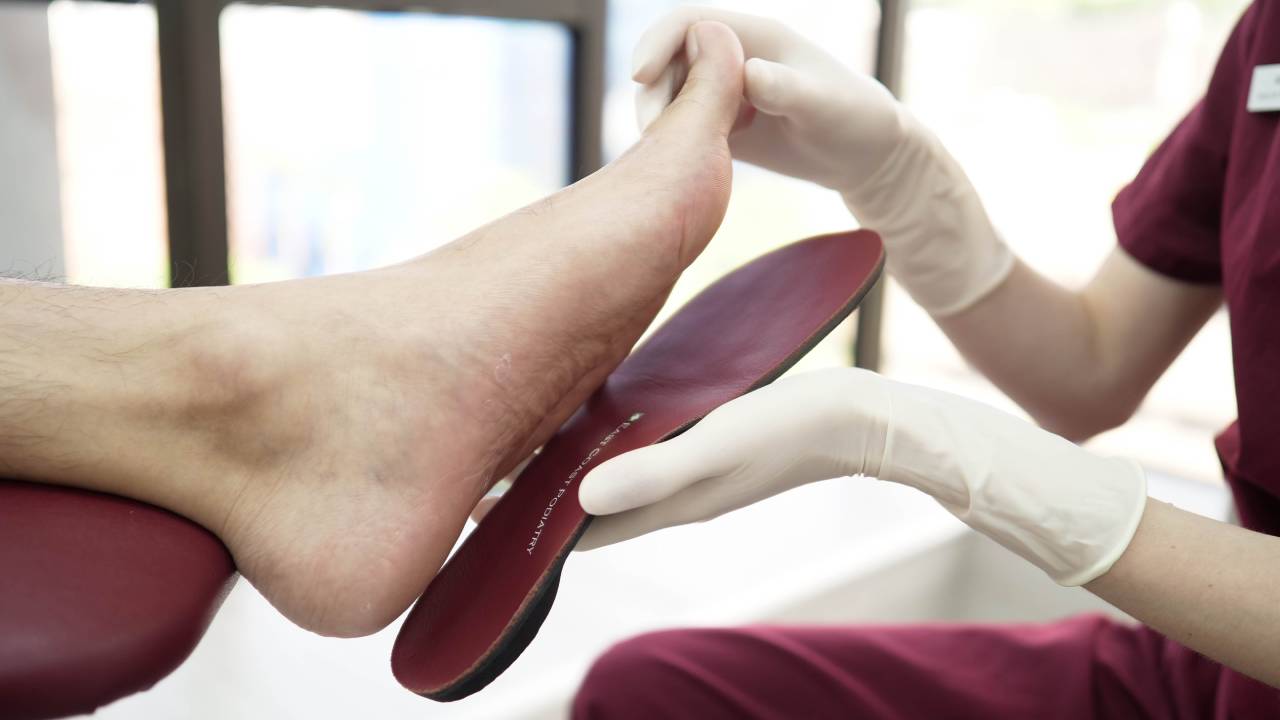What is Nail Trauma?
Nail trauma is a common occurrence that is usually caused by:
- Crushing or dropping something on the toe
- Abnormal biomechanics
- Repetitive micro-injuries caused by excessive use
- Pressure arising from ill-fitting footwear
Forms of nail trauma vary in severity but can most frequently lead to a subungual hematoma, a dark discolouration due to the pooling of blood under the nail. More severe cases can lead to splitting or detachment of the nail from the nail bed, or an underlying tissue or bone fracture.
Who Is At Risk For Nail Trauma?
This condition can affect individuals of all genders and ages as it is often caused by an result of injury to the nail. However, there are certain groups of people that may experience nail trauma more often, such as:
Runners
Individuals that run intensively may find themselves with bleeding, blistering or black toenails. This is caused by repetitive microtrauma from the top of the shoe impacting the toes while running.
Those wearing ill-fitting shoes
Overly tight shoes will squeeze the toes together, while loose-fitting shoes may have an overly large toe box, causing the toes to bump against the shoe repeatedly.
Possible Complications of Nail Trauma Injuries
If nail trauma is left unaddressed, the open wound can get infected with bacterial, fungal and/or viral infections. These infections can spread to other nails, tissues, or even bone if left unresolved. If an infection occurs, advanced therapy will be required and recovery will take longer.
Unresolved nail trauma can also lead to long-term problems such as abnormal nail growth, ingrown toenails, unsightly nail deformities, and other conditions. A damaged nail matrix (where cells that make up the nail plate are created) may also lead to a complete loss of the nail.


When is Nail Trauma, Not Nail Trauma?
While uncommon among Singaporeans, certain types of skin cancer (melanoma in particular) can resemble nail trauma. The pattern for a subungual melanoma is usually distinctive and is characterised by a vertical brown or black discolouration that stretches from the base of the nail to the tip. This discolouration will appear gradually over time and is often painless but can potentially spread to other parts of the body.
Subungual melanomas are life-threatening, but often get diagnosed at a later stage as the foot is usually overlooked during an inspection. If your nails have developed a pattern of discolouration without any cause, consult a podiatrist immediately as this could dramatically increase your chances of survival.
Managing Nail Trauma
Mild cases of nail trauma may only require offloading during the healing process, while more complicated injuries such as fractures, may require a thorough examination and diagnostic test, such as ultrasound or x-ray. These assessments help determine the extent of the damage and the best course of action.
Nail deformities inflicted by trauma are also likely to require a minor surgical procedure to the nail plate along with adequate follow-up procedures to ensure proper healing.

Patients with underlying biomechanical issues may be prescribed custom insoles to prevent deterioration from microtrauma and allow recovery of the existing injury. If left unresolved, the nail will likely become dystrophic and unsightly due to constant trauma. It may not be able to return to its original condition. Do speak to your podiatrist to discuss your options and how you can prevent this from happening.




